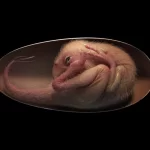Frozen Fur Ball Turns Out to Be 30,000-Year-Old Ice Age Squirrel
The post Frozen Fur Ball Turns Out to Be 30,000-Year-Old Ice Age Squirrel appeared first on Healthy Holistic Living.
Imagine stumbling upon a small, unassuming fur ball, only to discover it’s not just any ordinary remnant of the past, but a 30,000-year-old messenger from the Ice Age. This is not a scene from a sci-fi movie but a real-life revelation that captivates the imagination and transports us back in time.
Recently, the discovery of a mummified Arctic ground squirrel, curled up as if in eternal slumber, has offered scientists and history enthusiasts alike a remarkable glimpse into a world that existed thousands of years before us. Found in the frostbitten lands of Canada’s Yukon, this tiny creature’s perfectly preserved state is a testament to the natural freezer that is permafrost. Such discoveries are not just about marveling at the past; they are crucial keys to unlocking secrets of the Earth’s climatic shifts and the life forms that once roamed our planet.
Join us as we delve into the fascinating journey of this ancient squirrel, exploring the science behind its preservation, the ecosystem it was part of, and the implications of such finds on our understanding of history. This tale of discovery is not just informative but filled with intrigue, inviting you to unravel the mysteries of a world long gone but not forgotten.
The Discovery
In the remote, icy expanses of Canada’s Yukon, a discovery was made that turned a simple exploration into a gateway to the ancient world. Nestled near Hester Creek in the Klondike Gold Fields, within the Trʼondëk Hwëchʼin Traditional Territory, lay a fur ball unlike any other. This was no ordinary find; it was the mummified remains of a 30,000-year-old Arctic ground squirrel, its body curled up in a natural pose of eternal rest. The Yukon Beringia Interpretive Centre, the first to shed light on this incredible find, shared their astonishment and excitement with the world. “It’s amazing to think that this little guy was running around the Yukon several thousand years ago,” they remarked, highlighting the bridge to the past this discovery represents.
Upon closer examination, the level of preservation stunned scientists and onlookers alike. The fur, tiny claws, and even the delicate features of its face remained intact, offering a rare, almost intimate glimpse into its ancient existence. This exceptional condition owes much to the partnership with the Alpine Veterinary Medical Centre, where an X-ray revealed the internal skeleton of the squirrel, bunched up but incredibly preserved. This tiny creature, soon to be displayed at the Beringia Centre, is not just a specimen for scientific study but a marvel for the public to witness firsthand.
The discovery speaks volumes, not only about the squirrel itself but also about the environment it lived in. Grant Zazula, a paleontologist for the Yukon government, encapsulated the sentiment perfectly: “I study bones all the time and they’re exciting, they’re really neat. But when you see an animal that’s perfectly preserved, that’s 30,000 years old, and you can see its face and its skin and its hair and all that, it’s just so visceral. It brings it so to life.” This squirrel, then, becomes a bridge between the present and the Ice Age, offering a tangible connection to the Earth’s ancient past.
Stay tuned as we delve deeper into the science that made this remarkable preservation possible, unlocking the secrets held within the permafrost and what this means for our understanding of history.
The Science Behind the Preservation
The extraordinary state of the 30,000-year-old Arctic ground squirrel is not just a marvel of nature but also a testament to the incredible preserving power of permafrost. Permafrost, a layer of permanently frozen ground found in polar regions, acts much like a prehistoric freezer, locking in organisms and materials for thousands, even millions, of years. This natural preservation process is what kept the squirrel, along with many other ancient finds, in such an immaculate condition, allowing us to peek into the past with unprecedented clarity.
Permafrost preserves organic material by halting the processes of decay and decomposition that typically occur after death. In the case of our furry Ice Age dweller, the freezing temperatures and lack of oxygen within the permafrost effectively prevented bacteria and fungi from decomposing its tissues. This, coupled with the dry conditions often found in these environments, helped to maintain not just the skeleton but also the soft tissues, fur, and even minute details like the tiny claws and facial features of the squirrel.
The significance of permafrost preservation extends far beyond the fascination of finding mummies from the Ice Age. It offers scientists a unique opportunity to study the past in a way that would otherwise be impossible. Through these preserved specimens, researchers can gain insights into the diets, health, and living conditions of ancient animals, as well as the climates and ecosystems in which they lived. Moreover, the study of preserved genetic material can shed light on the evolution of species and how they adapted to their changing environments.
This natural time capsule does, however, face threats from climate change. Rising global temperatures are beginning to thaw permafrost layers, risking the decomposition of these perfectly preserved windows into the past. This adds urgency to the work of scientists and researchers in extracting and studying these specimens before they are lost to the effects of a warming planet.
A Glimpse into the Ice Age Ecosystem
The discovery of the 30,000-year-old Arctic ground squirrel offers more than just a look at a single, well-preserved animal; it provides a window into the vast and varied ecosystem of the Ice Age. This period, known for its dramatic climatic shifts and colossal ice sheets, was home to an incredible diversity of life. Through finds like this squirrel, scientists can piece together the complex web of existence that characterized the planet thousands of years ago.
Yukon, the land of this remarkable find, was once a bustling hub of Ice Age biodiversity. The region hosted a range of species, from the majestic woolly mammoths with their towering tusks to the stealthy Beringian lions, predators that roamed the cold, harsh landscapes in search of prey. Also present were the wild horses, with their thick coats adapted to the frigid climate, and the giant short-faced bears, towering creatures that would have been both awe-inspiring and terrifying. Each of these species played a role in the ecosystem, whether as grazers, predators, or something in between, contributing to the dynamic balance of Ice Age life.
The preservation of these animals in permafrost not only allows us to understand their physical characteristics but also offers insights into their behaviors, diets, and how they interacted with their environment. For example, the study of plant matter found in the stomachs of these creatures can reveal what the landscape might have looked like and what food sources were available. Similarly, the analysis of isotopes in their bones can provide information on the climates they lived in and how they might have migrated or adapted to survive.
This squirrel, curled up as if merely asleep, bridges the gap between the present and a world that seems almost fantastical in its difference. It reminds us that the planet has undergone profound changes, shaping and reshaping the web of life in response to shifting climates and landscapes.
The ongoing discoveries in the Yukon and similar regions around the world are crucial for piecing together the puzzle of our planet’s past. They allow us to marvel at the resilience and adaptability of life and serve as a reminder of the ever-changing nature of Earth’s ecosystems.
The Role of Modern Technology in Ancient Discoveries
The unveiling of the past, particularly through discoveries as astonishing as the 30,000-year-old Arctic ground squirrel, is significantly enhanced by modern technology. Advances in science and technology have revolutionized the way we uncover, analyze, and preserve ancient specimens, offering unprecedented insights into our planet’s history.
X-ray imaging, for instance, played a pivotal role in studying the mummified squirrel without compromising its integrity. This non-invasive technique allowed researchers to examine the internal skeletal structure of the animal, revealing how remarkably intact it remained through millennia. Such technology is invaluable in paleontology, providing a glimpse into the anatomical details of ancient creatures without the need for physical dissection, which could potentially damage precious specimens.
Beyond imaging, DNA analysis has become a cornerstone of modern archaeological and paleontological studies. The ability to extract and analyze genetic material from ancient remains offers a direct line to understanding evolutionary histories, migration patterns, and even the diseases that afflicted ancient populations. In cases like the well-preserved mammoth and wolf puppy also discovered in the Yukon, DNA studies could unlock secrets about species that have long since vanished from the Earth, including their relationships to modern animals.
Technology also plays a crucial role in the preservation of these finds. Techniques such as freeze-drying and specialized chemical treatments can help stabilize specimens for long-term storage, ensuring that they remain available for future generations of scientists and historians to study. Additionally, digital modeling and 3D printing offer methods to create accurate replicas of specimens, allowing for broader access to these discoveries without risking damage to the originals.
The integration of technology in the study of ancient finds does not just enhance our understanding of the past; it also democratizes access to these discoveries. Through virtual reality and online databases, people around the world can explore detailed models of ancient creatures, artifacts, and archaeological sites, fostering a global appreciation for our shared history.
As we continue to push the boundaries of what technology can reveal about the past, we not only uncover more about the ancient world but also about the ingenuity and adaptability of humanity in its quest to understand the origins of life on Earth.
Tips for Preserving Historical Finds
The discovery and preservation of historical finds, like the 30,000-year-old Arctic ground squirrel, offer invaluable insights into our planet’s past. For professionals and enthusiasts alike, safeguarding these treasures requires careful consideration and technique. Here are comprehensive tips for preserving historical finds, drawing from the methodologies applied in recent discoveries:
1. Maintain a Stable Environment
Controlled Temperature and Humidity: Fluctuations in temperature and humidity can lead to deterioration. Keeping artifacts in a stable, controlled environment helps prevent decay.
Avoid Direct Sunlight: UV rays can fade and damage organic materials. Store and display finds away from direct sunlight.
2. Careful Excavation and Handling
Use the Right Tools: Employ tools that are appropriate for the delicacy of the find. Soft brushes, wooden picks, and specialized equipment can prevent damage during excavation.
Wear Gloves: Handling artifacts with gloves minimizes the risk of contamination and physical damage from oils and acids present on human skin.
3. Documentation and Record-Keeping
Detailed Records: Keep comprehensive records of the find, including location, depth, and the context in which it was found. Photographs and drawings can be invaluable for future study.
Use of Non-Invasive Techniques: Employ techniques like X-ray imaging or 3D scanning to explore and document finds without physically altering them.
4. Leveraging Technology for Analysis and Preservation
Non-Destructive Testing: Utilize methods such as radiocarbon dating, DNA analysis, and isotopic studies to gather information without harming the artifact.
Digital Preservation: Create digital replicas through 3D scanning. This allows for broader access and study while protecting the physical specimen.
5. Public Engagement and Education
Exhibitions and Displays: Carefully prepare and present finds for public viewing, using protective casings and controlled lighting to prevent damage.
Educational Programs: Share the significance of the discovery through workshops, talks, and interactive displays, fostering a public appreciation for heritage preservation.
6. Collaboration with Professionals
Seek Expert Advice: Collaborate with conservationists, paleontologists, and other specialists for best practices in preservation and study.
Continuous Learning: Preservation techniques evolve. Stay informed about new methods and technologies that can aid in the conservation of artifacts.
By adhering to these guidelines, we ensure that historical finds continue to inform and inspire future generations, bridging the gap between our present and our past. The preservation of artifacts like the Arctic ground squirrel is not just about maintaining a physical object; it’s about keeping the story and the science alive.
Embracing the Past, Shaping the Future: The Legacy of Discovery
The tale of the 30,000-year-old Arctic ground squirrel is more than just a story of preservation; it’s a narrative that connects us to the distant past and teaches us the value of curiosity and discovery. This small creature, preserved by the icy grip of permafrost, serves as a vivid reminder of the world that once was. Through the combined efforts of modern technology and careful preservation, we have the privilege of glimpsing into the Ice Age, understanding its ecosystems, and learning from its inhabitants.
As we continue to unearth and preserve these historical finds, we not only pay homage to the Earth’s rich history but also underscore the importance of conservation and respect for our natural world. Each discovery is a piece of the puzzle, helping us to understand the complex tapestry of life on our planet and reminding us of our place within it.
Let us remain ever curious, ever vigilant in our quest to uncover the secrets of the past, for they hold the keys to understanding our future.
The post Frozen Fur Ball Turns Out to Be 30,000-Year-Old Ice Age Squirrel appeared first on Healthy Holistic Living.











